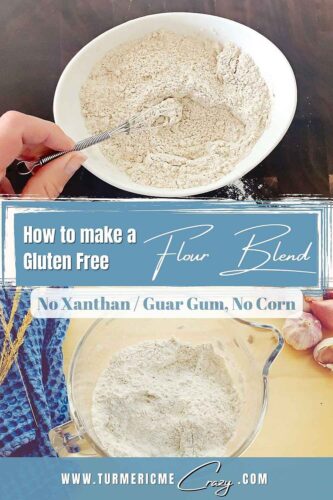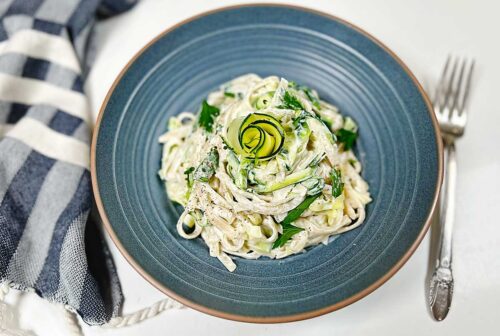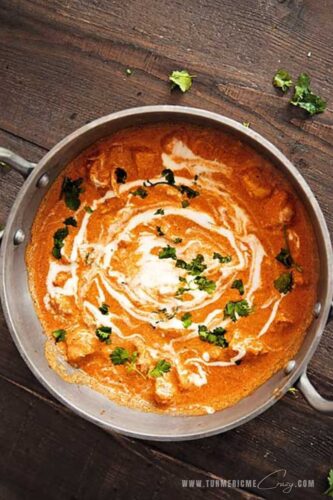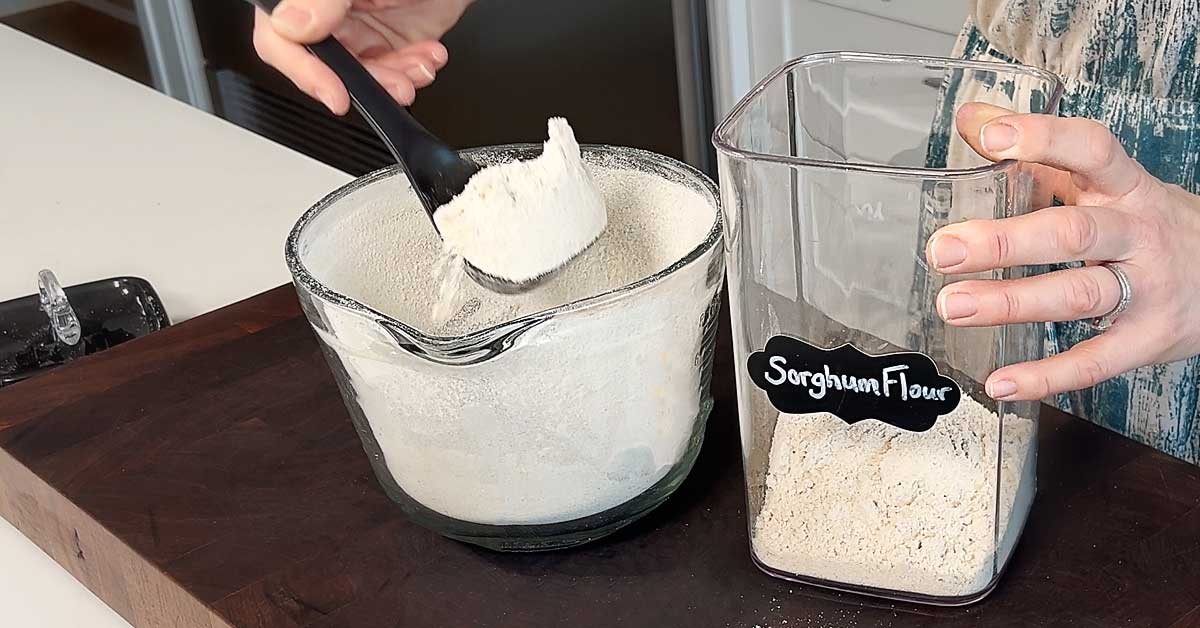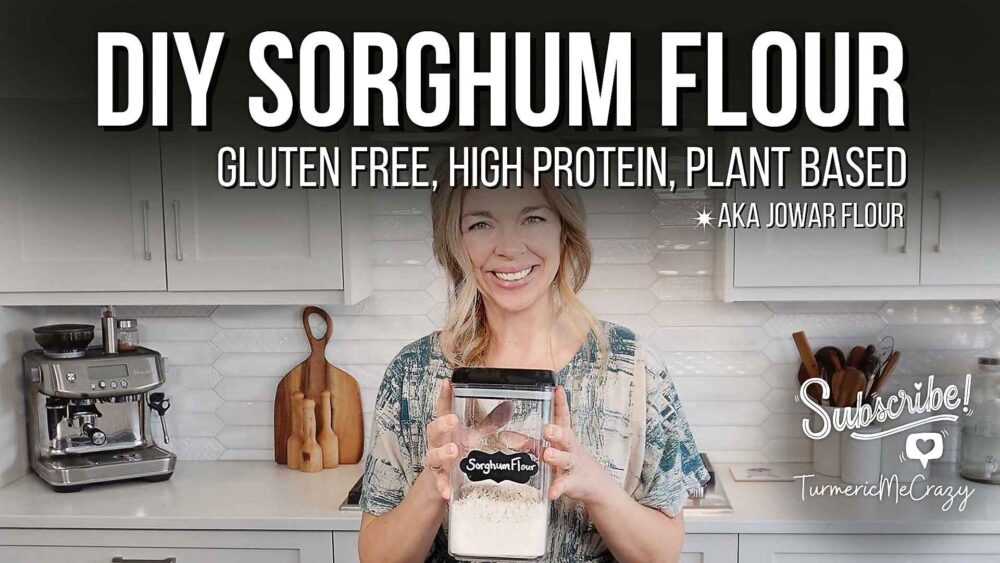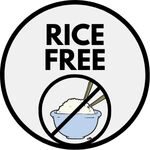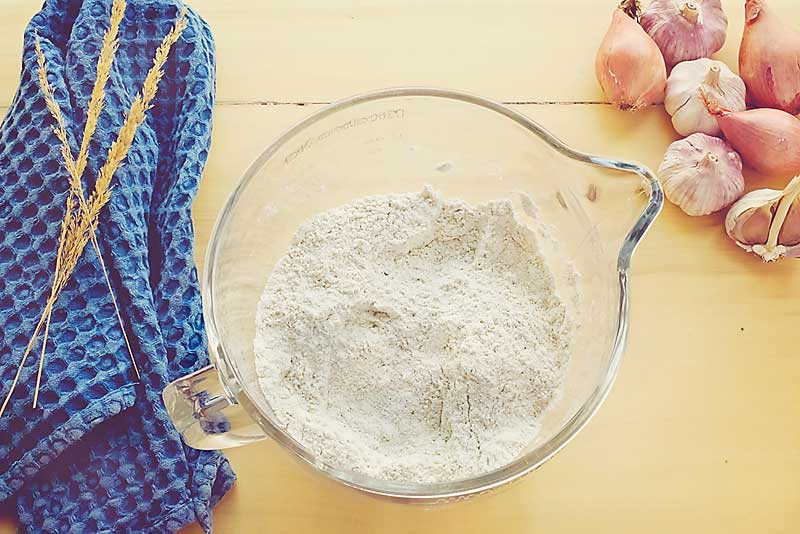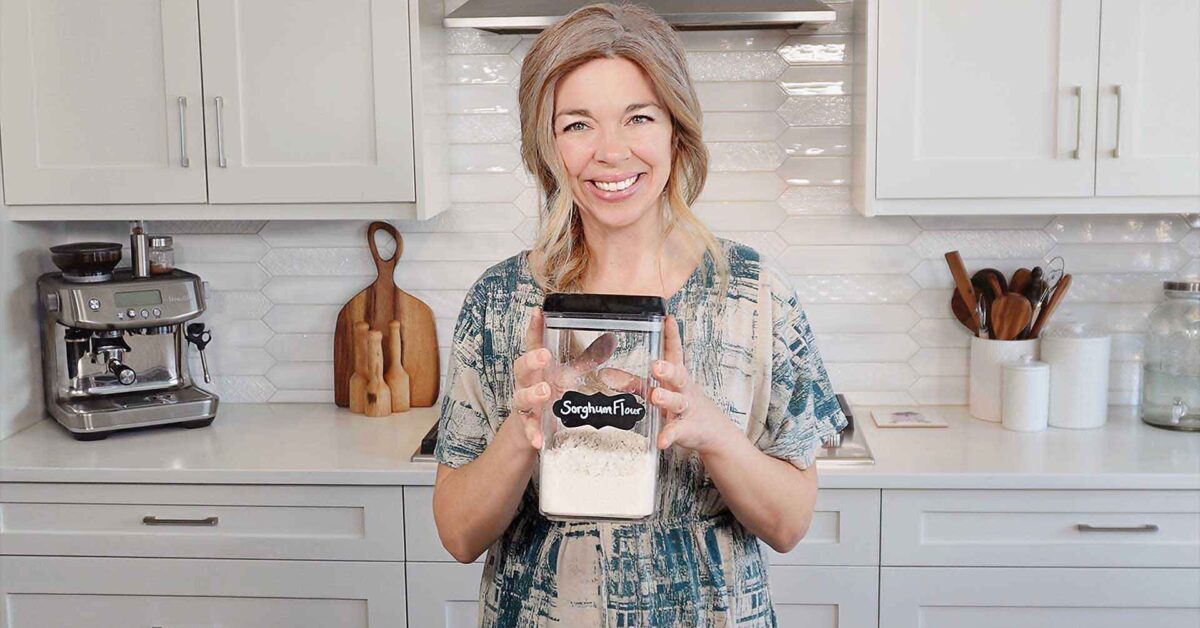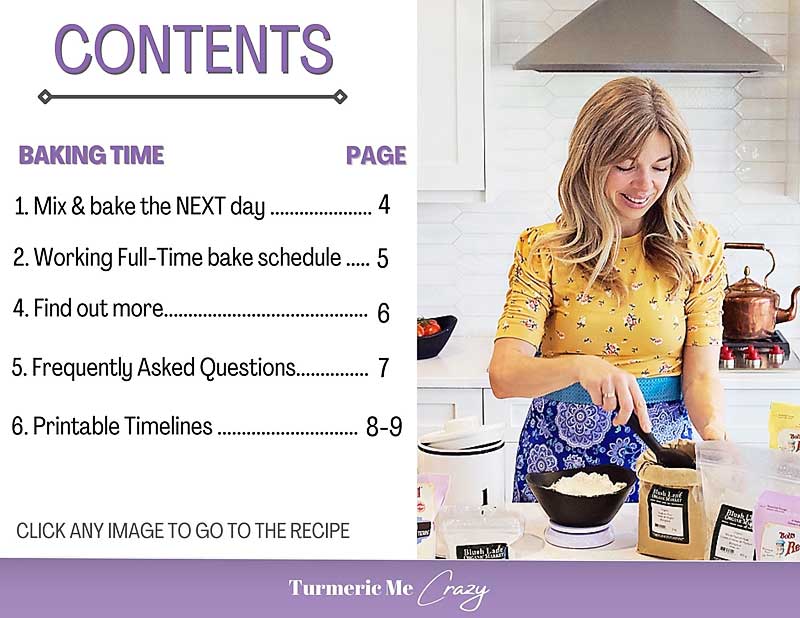Quickly & easily make your own Sorghum Flour at home in just 4 simple steps! Sorghum flour is such a versatile alternative flour, with a mild, slightly nutty but neutral taste. Plus, it’s naturally gluten-free! Sorghum’s mild flavour makes it the perfect healthy whole grain flour for sweet & savoury recipes! Use this lovely gluten free flour to make delicious gluten free bakes! Once you’ve tried this indispensable flour, it’s sure to become one of your pantry staples!
Sorghum (aka Jowar), a gluten-free ancient grain, is gaining popularity for its nutritional benefits and versatility in the kitchen. Harness the goodness this ancient grain by making your own sorghum flour at home!
This recipe is:
WHY YOU'LL LOVE IT!
- Easy to make with step by step video instructions (even 1st time gluten-free bakers can make it).
- DIY Gluten Free Sorghum Flour FASTER than you can make it to the store to buy some!
- Grind your flour fresh, when you need it!
- Never have to worry about the store being out of stock!
- Fresh flour tastes better & makes better Gluten Free Baking.
- Use this fresh sorghum flour to replenish & reactivate & or create your sorghum sourdough starter.
Want to make GLUTEN FREE SOURDOUGH?
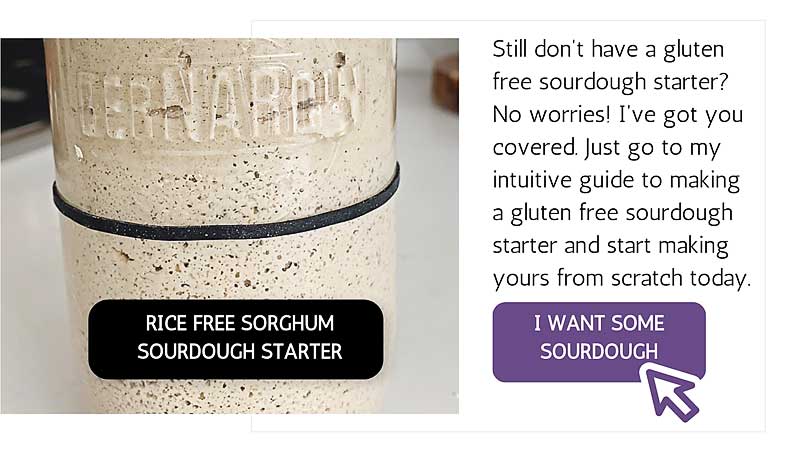
CONTENTS
1. Ingredients
Sorghum Grains – aka Jowar, organic recommended but not required.
2. Materials List
The essentials you need to make Sorghum Gluten Free Flour.
3. How to make Gluten Free Sorghum Flour
Here you’ll find easy to follow video instructions to easily make sorghum flour at home!
7. Frequently Asked Questions (FAQ)
Can’t find the answer to your question? Please feel free to contact me anytime in the comments below or privately on my contact page.
Here I’ll answer questions regarding:
- Why make my own Gluten Free Flour?
- Is Sorghum naturally gluten free?
- Can I use a coffee grinder to make my own sorghum flour?
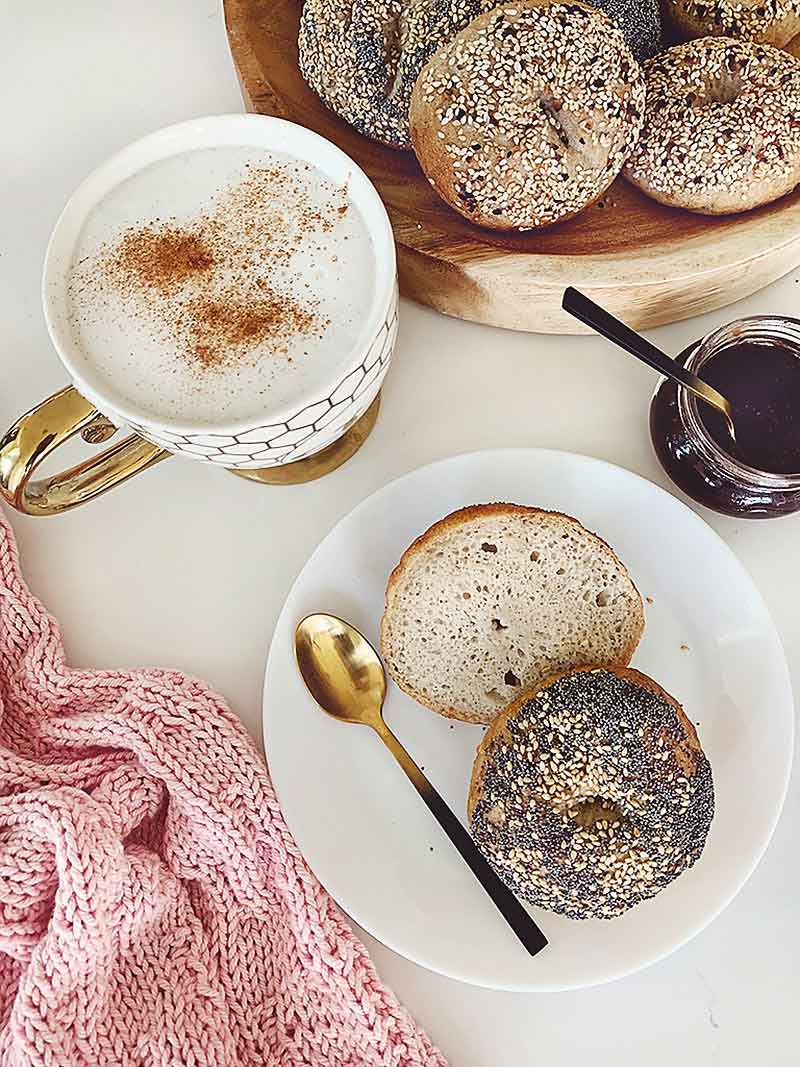
Want more delicious recipes at your fingertips?
Get updates on our latest posts & recipes from TurmericMeCrazy straight to your inbox!
By clicking subscribe you are consenting to receive emails from TurmericMeCrazy. I will only email you monthly with new recipes & updates. No spam I promise!
INGREDIENTS
- Sorghum Grains (aka Jowar)– I recommend buying an organic, if possible as this will create the best flour (especially for a sourdough starter).
- Water – Fresh, clean water is all that you need!
what is sorghum?
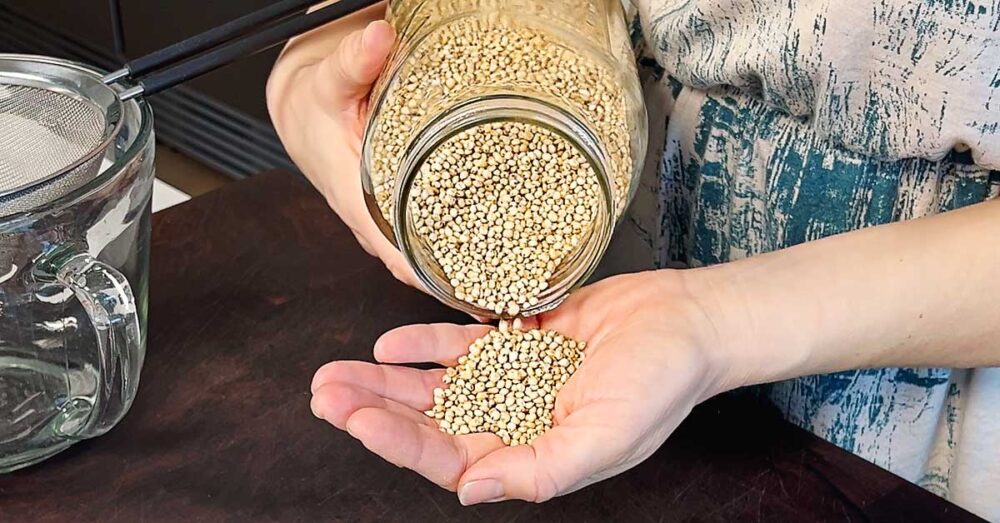
Sorghum (Sorghum bicolor) is a cereal grain that belongs to the grass family Poaceae. It is known by many names, the most common being Sorghum, Jowar & Great Millet. Sorghum is one of the world’s oldest cultivated grains, with a history dating back thousands of years. Originating in Africa, sorghum has played a significant role in the diets, cultures, and economies of various regions around the world.
Sorghum is grown for its seeds, which can be used as a whole grain or processed into various products such as flour, syrup, and animal feed.
The seeds of the sorghum plant, commonly referred to as sorghum grains, are a primary part of its culinary use. These grains can be ground into flour, which is gluten-free and can be used in various gluten free baking recipes.
what does sorghum flour taste like?
Sorghum flour has a lovely, mild, slightly nutty & sweet flavour, with a vanilla like scent. The flavour of sorghum flour is often compared to that of whole wheat flour, but with a hint of sweetness. It has a pleasant and earthy taste that pairs well with a variety of gluten free bakes from savoury to sweet.
While sorghum flour has its own distinct flavour, it also has a relatively neutral base, allowing it to blend well with other ingredients in recipes.
what is sorghum flour used for?
Sorghum flour is best known for its use in Indian cuisine. Indian flabread, Jowar Roti, is made using sorghum flour. I use sorghum flour as one of my healthy staples for gluten free baking and in many of my gluten free flour blends.
The grains of sorghum can be cooked as a cereal for porridges, milled to be used as a fabulous gluten free flour or even as a thickening agent for stews.
In addition to being a dietary staple, sorghum is used for animal feed, biofuel production, and industrial applications. Sweet sorghum varieties are grown for their sugary sap, which can be processed into sorghum syrup or molasses.
nutritional value of sorghum flour
Sorghum is a nutritious ancient grain that contains essential nutrients such as protein, fibre, vitamins (including B vitamins), and minerals (such as iron and magnesium). It is known for its antioxidant properties.
Here’s an overview of the nutritional profile of sorghum grains:
Macro-nutrients
Carbohydrates:
- Sorghum is primarily composed of carbohydrates, providing a good source of energy. It contains both complex carbohydrates, such as starch, and simpler carbohydrates like fibre.
Protein:
- Sorghum is relatively high in protein compared to other grains and this promotes a soft and tender crumb in our gluten free bakes. It is a good plant-based protein source, making it valuable for individuals following vegetarian or vegan diets.
Fiber:
- Sorghum is rich in dietary fibre, which is essential for digestive health. Fibre helps regulate bowel movements, supports a feeling of fullness, and may contribute to heart health.
Fats:
- Sorghum grains are low in fat. The fat content primarily consists of healthy unsaturated fats.
Micro-nutrients
Vitamins:
- Sorghum contains various vitamins, including B vitamins such as thiamine (B1), riboflavin (B2), niacin (B3), and vitamin B6. These vitamins play essential roles in energy metabolism and overall health.
Minerals:
- Sorghum is a good source of minerals like iron, magnesium, phosphorus, and zinc. These minerals are important for bone health, immune function, and overall well-being.
Antioxidants
- Phytochemicals:
- Sorghum contains various phytochemicals, including antioxidants like phenolic compounds. Antioxidants help neutralize free radicals in the body, potentially reducing the risk of chronic diseases.
Sorghum’s nutritional richness, combined with its versatility in the kitchen, makes it a valuable addition to a balanced and diverse diet. As interest in ancient grains and gluten-free options continues to grow, sorghum is gaining recognition for its health benefits and culinary adaptability.
MATERIALS LIST - DIY sorghum FLour
- Large Bowl
- Fine Mesh Sieve or Strainer
- Towel & or Paper Towel
- Baking Tray (lined with Baking Parchment)
- High Speed Blender (e.g. Vitamix) or
- Air-tight Container to store flour
how to make gluten free sorghum flour
PIN THIS diy Sorghum flour how to guide for later
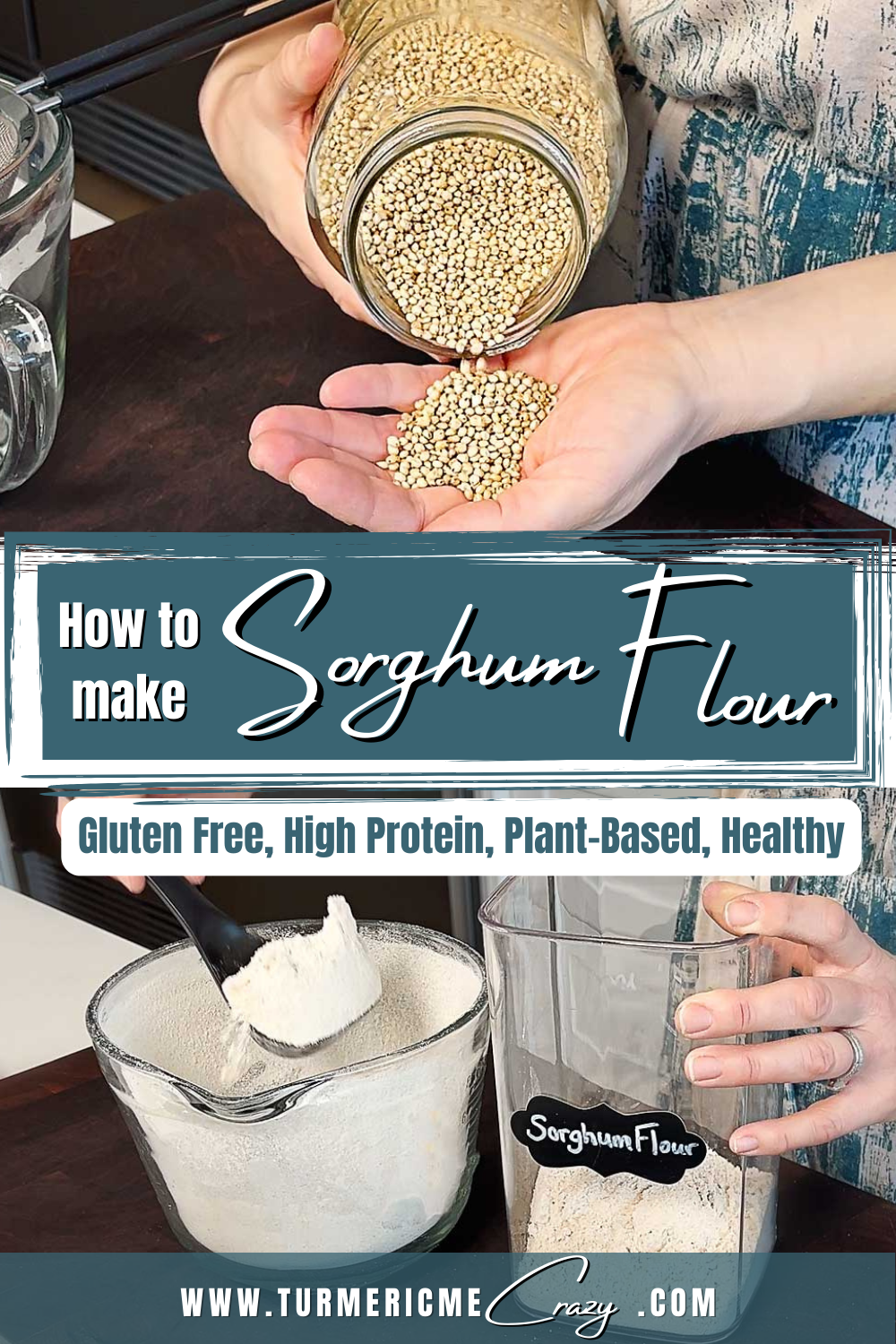
FREQUENTLY ASKED QUESTIONS
Can’t find the answer to your question? Please feel free to contact me anytime in the comments below or privately on my contact page.
Ever go to the store looking for a specific gluten free flour and they are sold out? I sure have! In fact, I have been on the hunt for certain flours for hours, scouring stores, only to be left disappointed. Yes, we can order online, but what if you want to bake right now? Knowing how to make your own gluten free flours means freedom to bake when you want to!
- Bake when you want to bake!
- Never worry about supply of flours at the store.
- Grind flours fresh when you want to bake!
- Freshly ground flour = better tasting bakes.
- Often save money by buying grains in large bags & grinding yourself!
Yes! Sorghum is naturally free from gluten, however, where things get tricky is in the farming & the processing facilities. If the sorghum is processed and packed in a facility that is not dedicated to gluten free, there is always a risk of contamination.
This is why I suggest using organic, certified gluten free sorghum, but of course the choice is totally yours!
This is a tricky one, I have not tried this and don’t believe that the coffee grinder would be powerful enough to make the flour fine enough for gluten free baking. Fine sorghum flour will produce lighter, more delicate treats, allowing for more lift & expansion of your doughs!
With that said, if all you have is a coffee grinder, give it a try. Grind a VERY small amount at a time and sift several times. It may just work!
PLEASE RATE & COMMENT
I sure do hope you love this Gluten Free Sorghum Flour how to guide. If you try it, I’d be ever so grateful if you’d please add a comment & a rating onto the recipe below or at the bottom of the post ♡. This will help Google recognize it and help my website grow.
Thank you once again for your readership & support.
Now let’s make some flour!

Homemade Sorghum Flour Recipe
Equipment
- 1 High Speed Blender (e.g. Vitamix)
- 1 Large Bowl
- 1 Towel & or Paper Towel
- 1 Baking tray
- 1 Air Tight Container
Materials
- 400 g Sorghum Grains Organic & Gluten Free (2 cups)
- 4 cups Fresh Water
Instructions
Step 1: Wash Sorghum Grains
- Add sorghum grains to a bowl, cover with water & swish around with hands400 g Sorghum Grains, 4 cups Fresh Water
- Over the sink, pour sorghum through fine mesh sieve / strainer, then rinse under water tap until water runs clear.
Step 2: Dehydrate Sorghum Grains
- Pour cleaned sorghum onto towel & pat dry with towel and or paper towel.
- Pour sorghum onto baking tray lined with parchment baking paper or re-useable mat.
- Dehydrate in oven at 150°F (66°C) for 30 mins. If no dehydrate setting, put oven to lowest temperature (usually around 175°F = 79°C) and dry for 15-20 mins. Dehydrate until sorghum is completely dry & slightly toasted.
- * Make sure to dry your fine mesh sieve / strainer completely as you will use it again.
Step 3: Grind Sorghum Grains to a fine powder
- Use parchment paper to put all dried sorghum into high speed blender.
- Grind on low then increase to high for 30 seconds to 1 minute.
- Using a dry fine mesh strainer, sift flour to filter out any large grains. Discard large grains, or particles.
- Return flour to blender & blend in 10 second intervals (start on low & increase to high) scraping down the sides of the blender in between each interval if neccessary. Repeat 2-3 times until reaches a fine powder consistency.
- Store your DIY sorghum flour in an airtight container & use within 1 month for best results!
Video
Notes
- See FAQ above to see if you can use your blender or a coffee grinder.
- Fine Sorghum Flour will produce better baking results. Don't skip the sifting step!
- Try using your freshly milled sorghum flour to feed your gluten free sourdough starter! It will absolutely love it. Give it a few feeds to adjust to the change and you'll find it rises so much more!
DELICIOUS RECIPES made with sorghum flour...
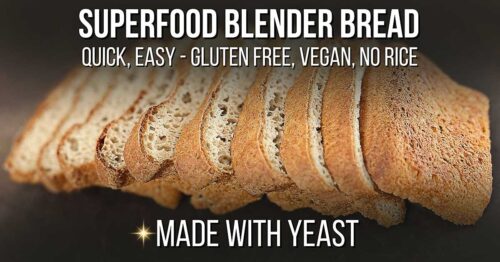
Gluten Free Superfood Bread (easy & nutrient packed)
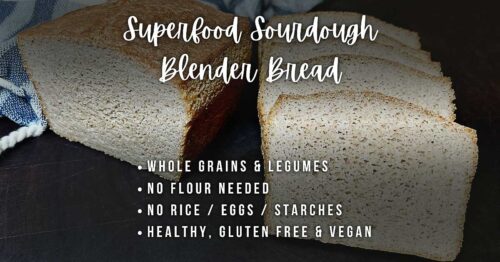
Superfood Gluten Free Sourdough Bread (easy & nutrient packed)
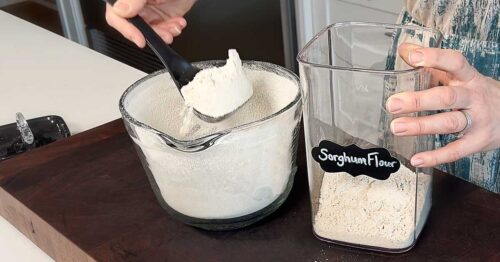
How to make Sorghum Flour (Jowar) Gluten Free!
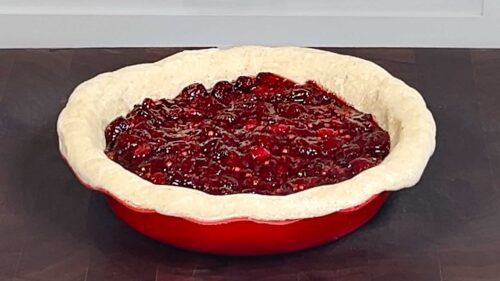
The Best Cherry Cranberry Pie – a tangy twist on a classic pie
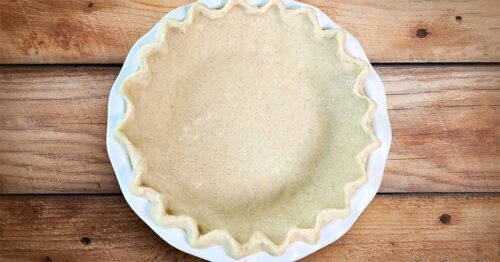
Easy Gluten Free Pie Crust Recipe – Egg Free

White Chocolate Raspberry Scones – Gluten Free, Dairy Free and Vegan

Gluten Free Pizza Crust (Allergen Friendly)

The Best Gluten Free Cheddar Biscuits

Mom’s Famous Gluten Free Oatmeal Chocolate Chip Cookies
Want to make gluten free sourdough...?
Would you like to make a Gluten Free Sourdough Loaf with your fresh Sorghum Flour? You’ll love how easy making this bread becomes with my FREE BAKING TIMELINE & follow-along videos. I sure hope that this helps give you some ease in your gluten free sourdough journey!

